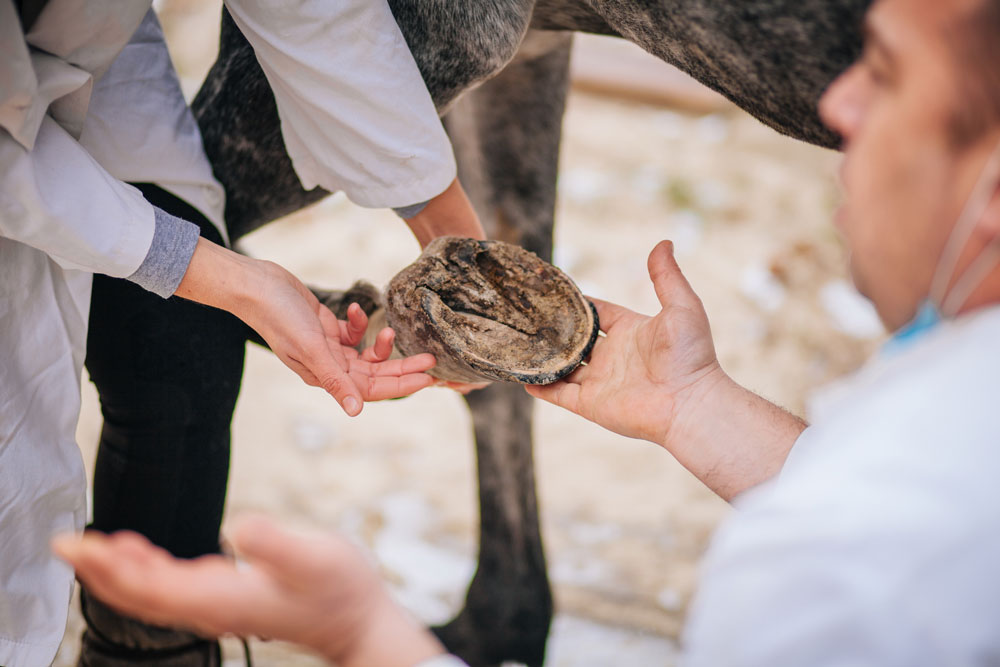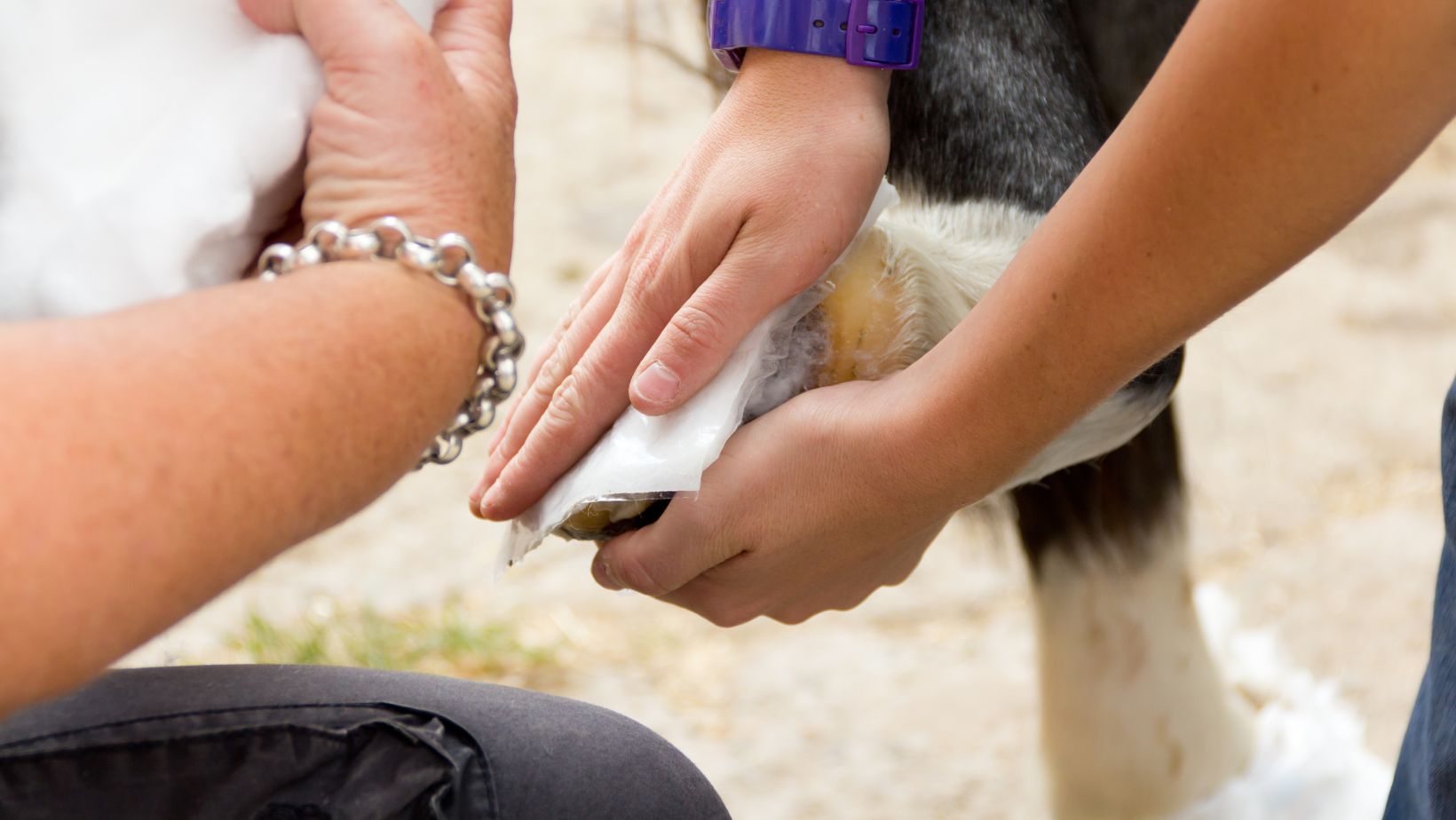An abscess can be a painful experience for your horse. Understanding what to do after a hoof abscess bursts can significantly aid recovery and well-being of your equine friend. The primary keyword, what to do after a hoof abscess bursts, is crucial as it guides us through the necessary steps.

Understanding Hoof Abscesses
A hoof abscess is an infection within the horses hoof. Bacteria enter into the hoof, often through tiny cracks or weak spots, leading to infection. This infection causes a buildup of pus, which results in pressure and subsequent pain.
When the abscess bursts, the pressure is relieved, providing immediate comfort to your horse. However, knowing how to manage the situation is essential for the healing process.
Signs of a Hoof Abscess
- Lameness in the affected hoof.
- Heat in the hoof
- Swelling in the leg
- Black or pungent discharge

First Steps After the Abscess Bursts
Clean the Affected Area
It is crucial to clean the affected area thoroughly. Use a mild antiseptic and clean water to get rid of any dirt or debris. This step helps prevent further infection.
Soak the Hoof
Soaking the hoof in warm water with Epsom salts can help draw out any remaining infection. Do this for at least 20 minutes daily. This method is gentle yet effective.

How to Wrap a Hoof After an Abscess Bursts
Wrapping the hoof can provide protection and aid in the healing process. Here are the steps:
- Clean and dry the hoof thoroughly.
- Apply a medicated poultice or drawing salve.
- Cover the hoof with a sterile gauze pad.
- Secur the gauze pad with a self-adhesive bandage.
- Ensure the wrap is snug but not too tight to allow blood circulation.
The Role of a Farrier
Consulting a farrier or a veterinarian is advisable once the abscess bursts. They can offer expert advice on hoof care and may recommend trimming the hooves to promote drainage and aid in healing.
Implement Preventative Measures
- Regular hoof inspections.
- Maintain cleanliness in the stable.
- Use appropriate hoof conditioners.
Consider integrating these preventive tips to reduce the risk of future abscesses.
Maintaining a Healthy Diet for Your Horse
Nutritional balance plays a crucial role in hoof health. Ensure your horse receives a diet rich in essential nutrients to promote strong and healthy hooves.
Monitor Recovery
Keep a close eye on the wound as it heals. Regularly check for any signs of continuing infection or complications. Consult a vet if necessary.
When to Call a Veterinarian
If the abscess does not improve or seems to worsen, its imperative to consult a veterinarian. Prolonged abscesses can lead to further complications if not treated properly.
For more in-depth information, you can visit this [page](https://vet.purdue.edu/hospital/equine/tips/equine-hoof-abscesses.php) (rel=’nofollow’).
Understanding and Managing Pain
Managing pain through the use of veterinarian-approved analgesics can provide comfort to your horse and aid in the healing process.
Hoof Boots: Added Protection
Investing in hoof boots can offer your horse the additional protection it needs during the recovery phase. Consult your farrier for recommendations on the best hoof boots suitable for your horse.
Short-term Care Plan
Developing a short-term care plan post-abscess treatment ensures more efficient recovery. Document each step, including soaking schedules, cleaning routines, and wrapping procedures, to stay on track with the healing process.
Long-term Care and Prevention
Thinking long-term involves regular check-ups, consistent hoof care, and preventive actions to maintain your horse’s hoof health. Implementing these measures reduces the chance of future abscesses.
Case Study: Successful Hoof Abscess Treatment
Let’s explore a case where these steps helped in the successful treatment of a hoof abscess. A 5-year-old mare, Storm, suffered from a persistent abscess. Following a consistent cleaning and soaking routine, coupled with expert farrier advice, Storm made a full recovery within a few weeks. Her owner ensures regular hoof inspections and boasts a clean stable to prevent future issues.
Frequently Asked Questions
Q: How long does it take for a hoof abscess to heal?
A: The healing time can vary. However, with proper care, most abscesses heal within a few weeks.
Q: Can a hoof abscess lead to more severe issues?
A: While many hoof abscesses heal without complications, neglected abscesses can lead to severe infections or laminitis. Always consult a veterinarian for persistent issues.
Q: How can I prevent future hoof abscesses?
A: Regular hoof inspections, proper nutrition, maintaining clean stable conditions, and using appropriate hoof care products can significantly reduce the risk of future abscesses.
As an Amazon Associate, I earn from qualifying purchases.
As an Amazon Associate, I earn from qualifying purchases.
